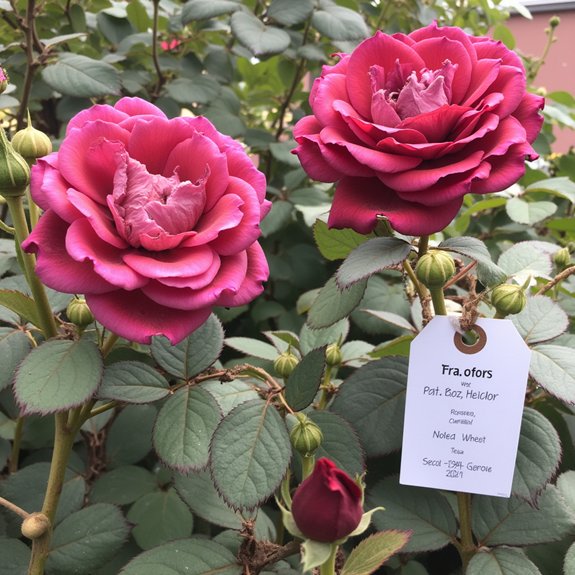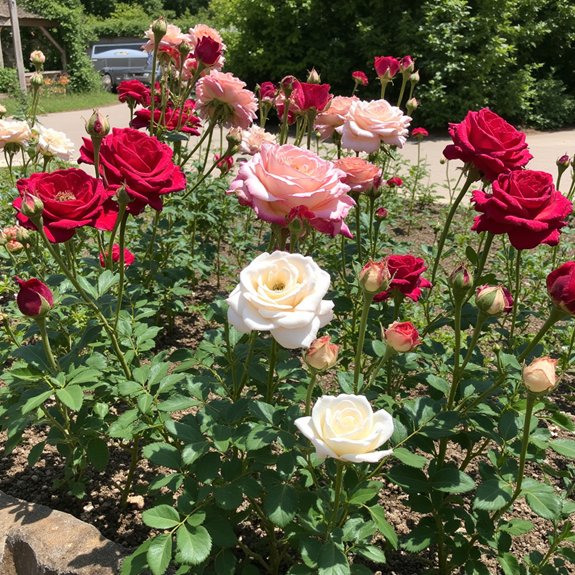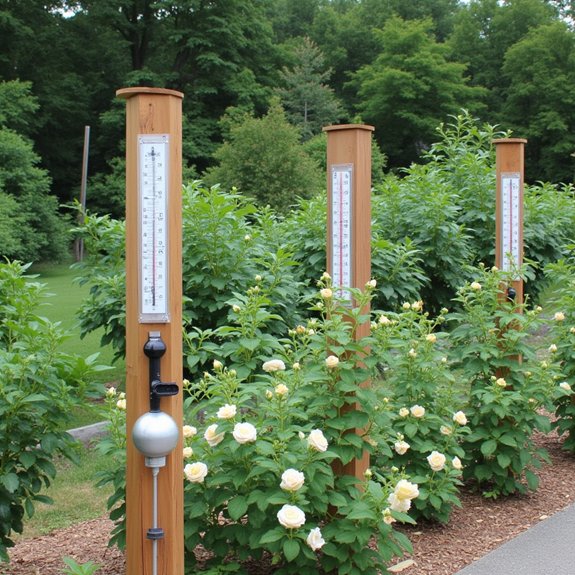Gardeners often overlook heirloom roses, mistakenly believing they require extensive maintenance or lack modern disease resistance. These heritage varieties, many dating back 100-300 years, actually demonstrate remarkable hardiness and fragrance that surpasses contemporary hybrids. Rosa gallica ‘Officinalis,’ for instance, survived European gardens since the 12th century without chemical treatments. The secret lies in understanding which varieties match your specific growing zone and soil conditions, plus knowing the three critical planting mistakes that doom most heritage roses from the start.
Contents
- 1 What Makes Heirloom Roses Special and Different
- 2 Historical Stories Behind Classic Rose Varieties
- 3 Top Fragrant Heirloom Roses for Your Garden
- 4 Disease-Resistant Varieties Perfect for Low-Maintenance Gardens
- 5 Understanding Growing Conditions and Climate Requirements
- 6 Unique Colors and Bloom Characteristics of Heritage Roses
- 7 Essential Planting and Spacing Guidelines
- 8 Seasonal Care and Maintenance Practices
- 9 Award-Winning Heirloom Varieties Worth Growing
- 10 Creating Beautiful Garden Designs With Heritage Roses
What Makes Heirloom Roses Special and Different

While modern hybrid tea roses dominate today’s gardens, heirloom roses offer something entirely different that sets them apart from their contemporary cousins. These antique varieties, classified as roses grown before 1867, showcase remarkable heirloom rose significance through their exceptional disease resistance and intoxicating fragrances. Unlike modern hybrids that prioritize appearance, unique rose varieties like ‘Rosa Mundi’ survive temperatures down to -40°F without chemical treatments. Their hardy nature means minimal maintenance, making them perfect for organic gardening. Most importantly, these roses connect gardeners to centuries of horticultural history while providing superior fragrance and natural resilience.
Historical Stories Behind Classic Rose Varieties
Romance, royalty, and rebellion weave through the enchanting histories of classic heirloom roses, each variety carrying tales that span centuries of human drama. ‘Rosa Mundi,’ with its distinctive pink petals striped in fuchsia, connects directly to one of England’s most famous love affairs between King Henry II and his mistress, “Fair Rosamund” Clifford in the 12th century.
‘La Belle Sultane’ immortalizes Aimée Dubucq de Rivery, a legendary figure from the Ottoman Empire. These romantic tales transform ordinary garden beds into living museums, where each bloom whispers stories of passionate affairs and powerful women who shaped history.
Top Fragrant Heirloom Roses for Your Garden

Beyond their enchanting stories, heirloom roses earn their place in modern gardens through extraordinary fragrances that modern hybrids rarely match. These fragrant varieties offer distinct rose scents ranging from sweet and spicy to fruity and musky.
‘Souvenir de la Malmaison’ delivers apple and clove notes from nearly thornless canes. ‘Rosa Gallica Officinalis’ produces a luscious aroma from bright pink blooms, while ‘Rose de Rescht’ offers classic rose fragrance without maintenance hassles.
‘La Belle Sultane’ provides intense fragrance alongside dark raspberry-purple flowers. ‘Crépuscule’ adds sweet musky scents from double apricot blooms, creating aromatic garden spaces that transport visitors through time.
Disease-Resistant Varieties Perfect for Low-Maintenance Gardens
Since modern gardeners increasingly seek beautiful roses without the weekly spray schedules, heirloom varieties offer the perfect solution with their natural disease resistance. ‘Rosa Mundi’ stands out with exceptional hardiness, surviving temperatures down to -40°F while resisting common fungal issues. This striped beauty requires zero chemical treatments.
‘Rose de Rescht’ earned recognition for its low maintenance gardening appeal, producing fragrant magenta blooms without spraying. Disease resistance techniques become unnecessary with these tough varieties. ‘Rosa Gallica Officinalis’ offers similar resilience, thriving in various climates with minimal intervention. These hardy performers prove that stunning roses and effortless care can coexist perfectly.
Understanding Growing Conditions and Climate Requirements

While disease resistance makes heirloom roses appealing, their success depends heavily on providing proper growing conditions that match their specific needs. Most varieties thrive in full sun to part shade, requiring at least six hours of direct sunlight daily. Well-drained soil composition proves essential, as waterlogged roots quickly lead to problems.
Climate zones range from 4 to 10 for most heirloom varieties. ‘Rosa Mundi’ handles extreme cold down to -40°F, while others prefer milder temperatures. Heights vary dramatically, from compact 3-foot bushes to sprawling 10-foot specimens, so plan spacing accordingly when designing your garden layout.
Unique Colors and Bloom Characteristics of Heritage Roses
Heritage roses consistently showcase remarkable diversity in bloom colors and forms that modern varieties often struggle to match. These colorful hybrids range from ‘Rosa Mundi’s’ pale pink petals striped with fuchsia to ‘La Belle Sultane’s’ dark raspberry-purple semi-double flowers. ‘Mutabilis’ demonstrates fascinating bloom variations, opening light cream and darkening to crimson throughout its flowering cycle. Double cupped blooms like ‘Souvenir de la Malmaison’s’ soft pink contrast sharply with ‘Rose de Rescht’s’ dark magenta clusters. Each variety offers distinct petal counts, from single blooms to fully double formations, creating visual interest that spans six weeks of spring flowering.
Essential Planting and Spacing Guidelines
When establishing heirloom roses in the garden, proper spacing becomes critical for healthy growth and disease prevention. Most varieties require 3-6 feet between plants, depending on their mature size. Larger specimens like ‘Mutabilis’, which spreads 10 feet wide, need more room than compact varieties.
Effective planting techniques include digging holes twice the width of the root ball and positioning the bud union at soil level. Spring and fall offer ideal planting windows when temperatures remain moderate.
Adequate spacing requirements guarantee proper air circulation, reducing fungal diseases that plague crowded plantings while allowing each rose sufficient nutrients.
Seasonal Care and Maintenance Practices
Several key maintenance tasks throughout the year keep heirloom roses thriving in ideal condition. Spring demands early fertilization with balanced rose food, followed by seasonal pruning to remove dead canes and promote airflow. Summer requires a consistent watering schedule, delivering deep irrigation twice weekly rather than frequent shallow drinks. Mulching in late spring conserves moisture while suppressing weeds around root zones. Fall preparation includes final deadheading and reducing watering frequency as plants enter dormancy. Winter protection involves mounding soil around base stems in harsh climates, ensuring these historic beauties survive freezing temperatures to bloom magnificently next season.
Award-Winning Heirloom Varieties Worth Growing
Prestigious horticultural organizations have recognized numerous heirloom roses with coveted awards, marking them as exceptional choices for modern gardens. ‘Souvenir de la Malmaison’ earned induction into the World Rose Society’s Old Rose Hall of Fame in 1991, showcasing its enduring appeal with apple-clove fragrance and nearly thornless canes.
‘Rose de Rescht’ received the Royal Horticultural Society’s Award of Garden Merit in 1993 for its dark magenta blooms and low-maintenance nature. ‘Mutabilis’ claimed Earth Kind® Rose of the Year in 2005, demonstrating remarkable disease resistance and drought tolerance. These award winning heirloom, timeless varieties prove their worth through decades of reliable performance.
Creating Beautiful Garden Designs With Heritage Roses
Heritage roses transform ordinary garden spaces into romantic sanctuaries, offering gardeners endless possibilities for creating stunning visual displays. These timeless beauties provide exceptional design inspirations through their varied heights, from compact 3-foot varieties to towering 12-foot climbers.
Strategic placement maximizes their impact. Plant shorter varieties like ‘Rose de Rescht’ in front borders, while positioning tall climbers such as ‘Zéphirine Drouhin’ against walls or trellises. Color combinations create visual harmony; pair soft pink ‘Souvenir de la Malmaison’ with deep magenta ‘Rose de Rescht’ for stunning contrast. Group roses in odd numbers for natural appeal, ensuring proper spacing prevents overcrowding.
